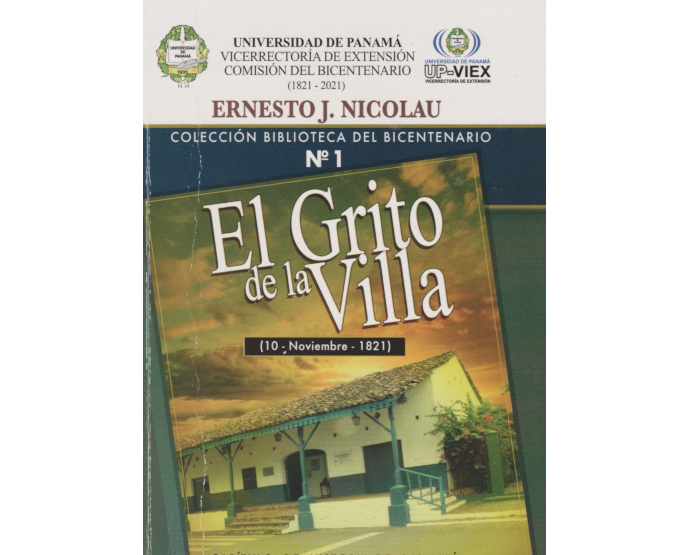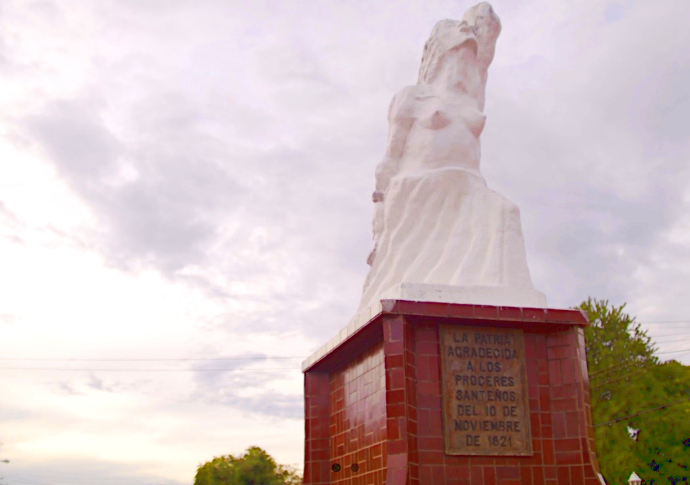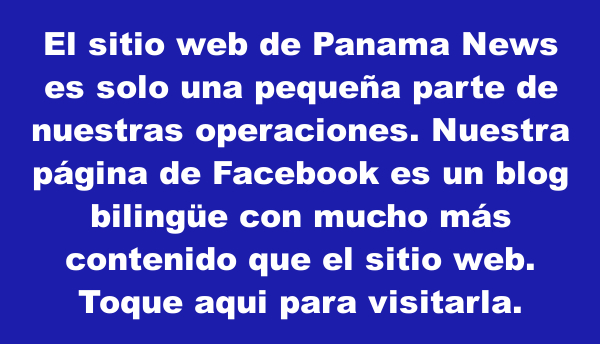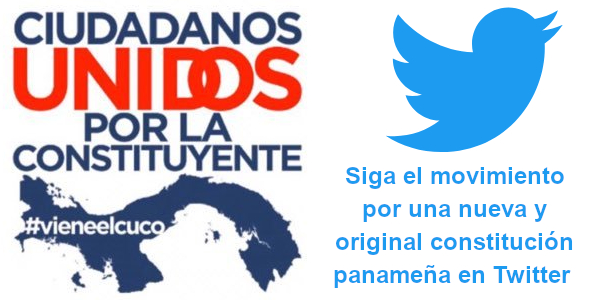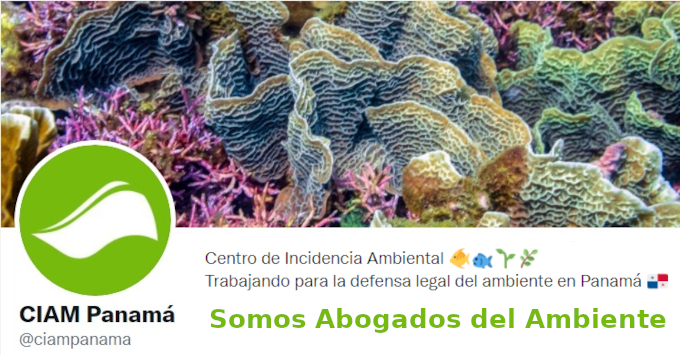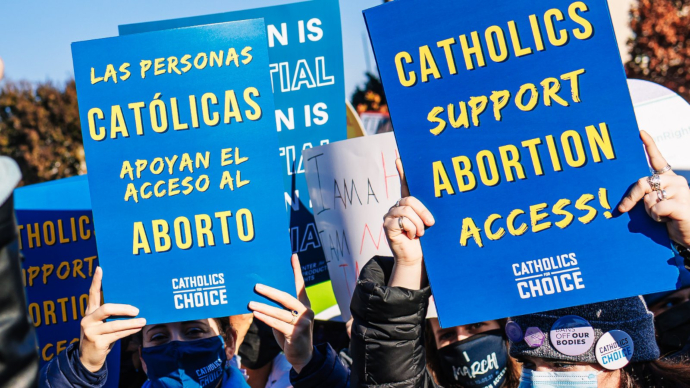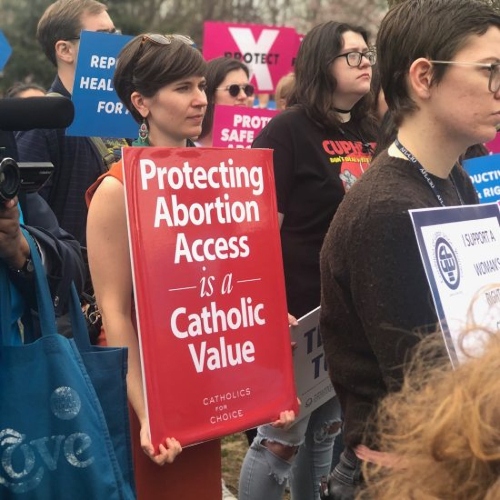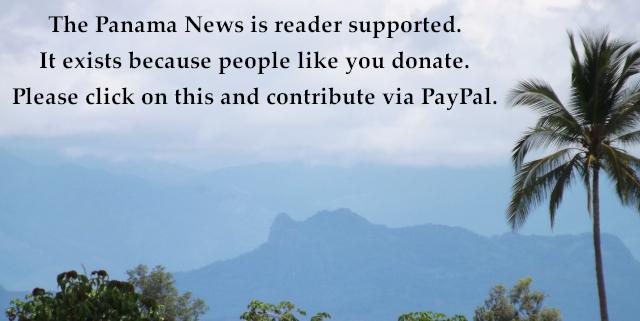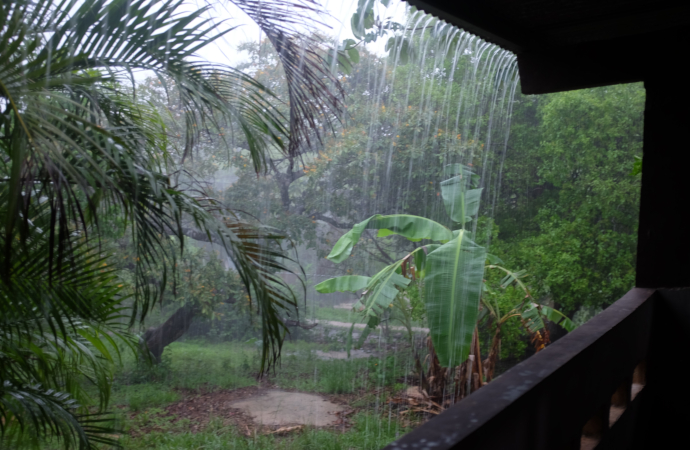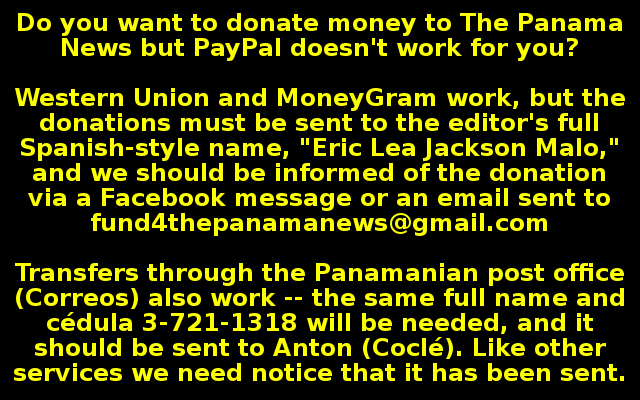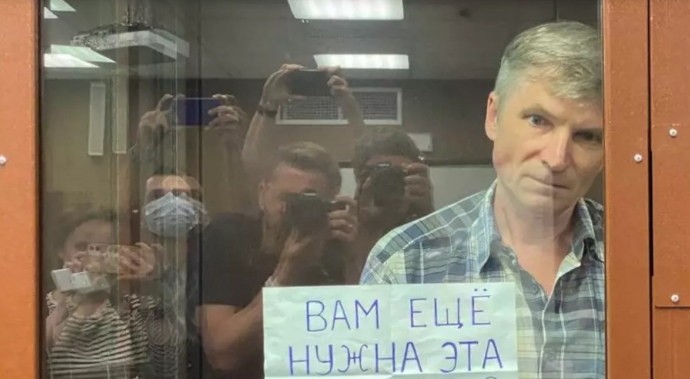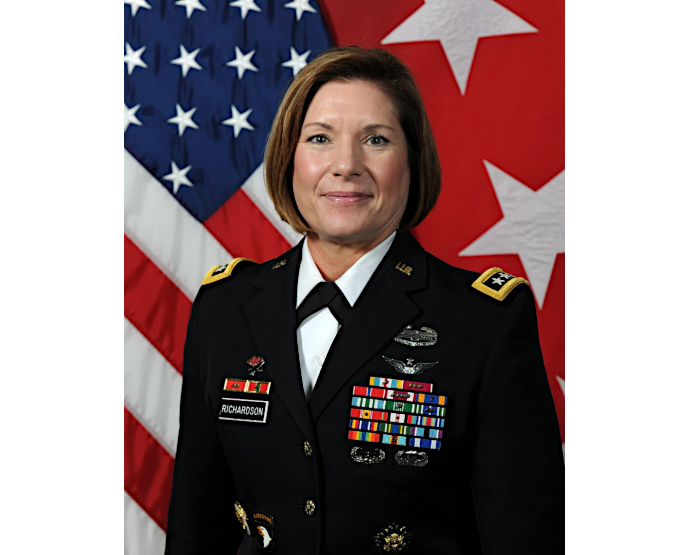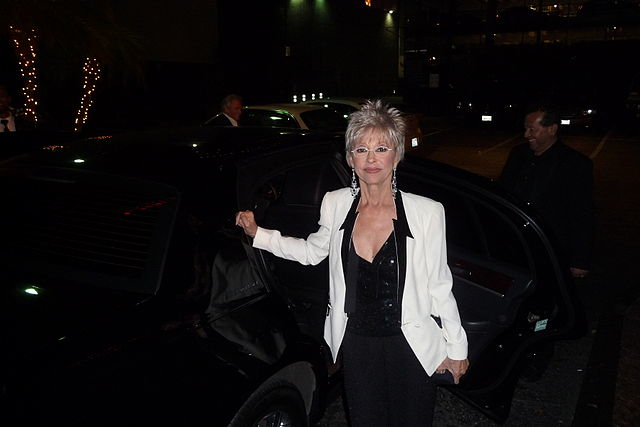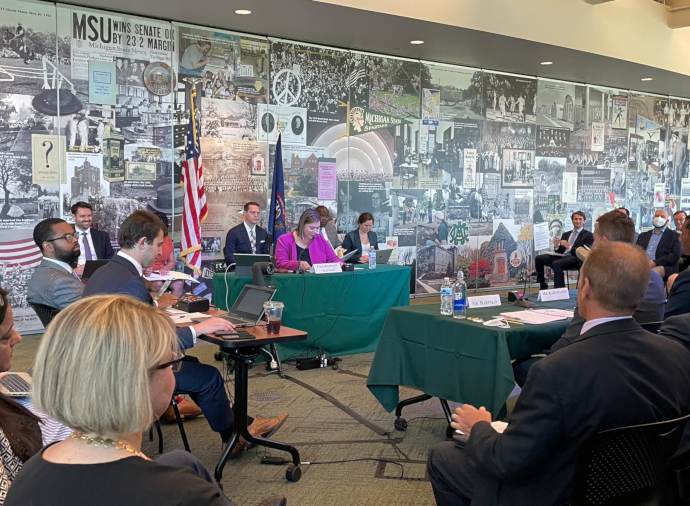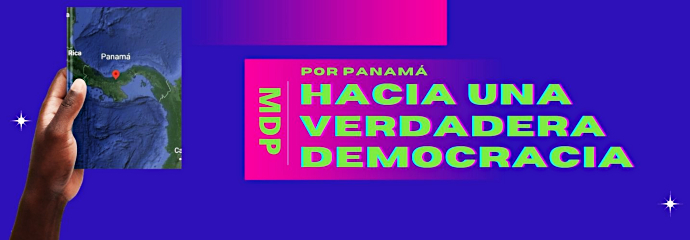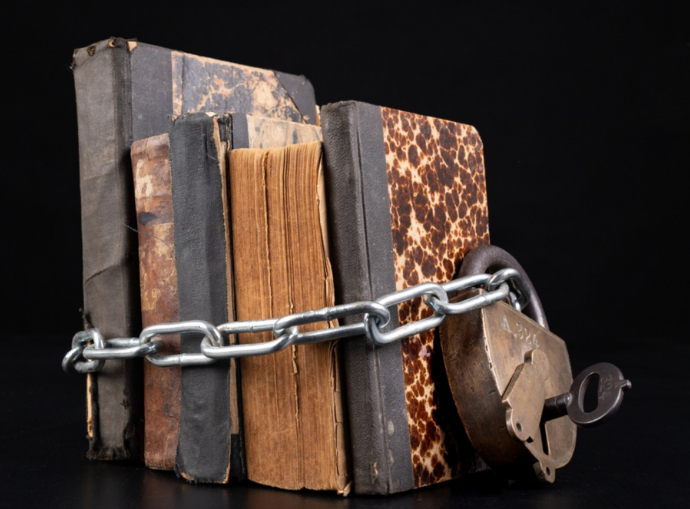¿Sin Rufina Alfaro?
Los actores de la independencia del Istmo de España
por Olmedo Beluche
En el marco de la conmemoración del Bicentenario de la Independencia de España, la Vicerrectoría de Extensión junto con la Comisión del Bicentenario de la Universidad de Panamá, han reeditado la obra El Grito de la Villa (10 de Noviembre de 1821), del historiador panameño Ernesto J. Nicolau (Nicolau, 2021).
A decir de Bonifacio Pereira Jiménez, que prologa la primera edición que data de 1961 (Nicolau E. J., 1961), así como de Milcíades Pinzón Rodríguez, que prologa la actual reedición, al momento de conmemorarse el Centenario de la Independencia de España se había roto el hilo de la memoria sobre los acontecimientos del 10 de Noviembre de 1821 en La Villa de Los Santos: el acta permanecía desaparecida, se desconocían a los personajes que protagonizaron los acontecimientos e incluso se creía que los hechos habían sucedido el 13 de noviembre.
Como la historia es uno de los campos más fértiles en que se desarrollan las contradicciones sociales, podría decirse que los comerciantes de la ciudad de Panamá, aliados a los latifundistas de Veraguas, habían impuesto su versión de la Independencia y la centralidad del 28 de Noviembre, en detrimento de los pequeños y medianos campesinos del Interior (La Villa, Las Tablas, Pesé, Natá, Ocú, Macaracas, Pocrí, Las Minas y San Francisco de la Montaña) quienes en verdad habían decidido el curso de la Independencia en el Istmo.
En la década de 1920, Ernesto J. Nicolau viajó a Colombia y recuperó de los archivos no sólo el acta de La Villa, sino una serie de documentos que le permitieron hacer la reconstrucción minuciosa de los hechos y conocer a los actores principales. Ese es el gran mérito de Nicolau y su libro. Éste es uno de los mayores aportes a la historia de los habitantes del Istmo.
Nos dice algo sobre las dificultades de la labor del historiador en Panamá el hecho de que, si bien Ernesto J. Nicolau retorna a Panamá con la documentación en 1928, y va publicando fragmentariamente en artículos de la Revista Cultural Lotería(Nicolau E. J., 1944), la edición completa de la obra solo se alcanza en 1961. Probablemente en ese momento tuvo cierta divulgación, porque se logró la legitimación de la conmemoración oficial del Grito de La Villa, pero la obra fue quedando en manos de eruditos y desconocida para el gran público, hasta esta reedición de 2021, que esperamos tenga mejor suerte.
El objetivo de la Independencia era la constitución de la República, ¿Cuál, Panamá o Colombia?
Las historias oficiales de los estados hispanoamericanos han deformado los acontecimientos de la Independencia de España para borrar las causas materiales concretas que motivaron las acciones de la gente de aquel entonces, para difuminar los intereses y demandas decada clase social, para presentar todos los hechos como si estuvieran motivados por el sueño “ideal” de construir la “nación” independiente. Evidentemente, la historia así tratada no es más que un instrumento de una ideología política nacionalista al servicio de la clase social que controla el estado nacional(Beluche, 2021).
Para el caso panameño se presenta el acontecimiento como si los personajes que protagonizaron la independencia lo hicieron en busca de la constitución dela República de Panamá como hoy la conocemos. Una consecuencia graciosa de esta manipulación histórica se expresó en el error de un monumento construido en 2021 por las autoridades de la provincia de Coclé en la conmemoración del “Bicentenario de la República de Panamá”(Reyes, 2021).
En 1821 no existía una “nación panameña” ni siquiera como identidad unificada de los habitantes del Istmo y, en todo caso, “panameños” lo eran los habitantes de la ciudad de Panamá. El “Istmo” olas “provincias del Istmo” es el concepto que se utilizaba para referirse a la región y sus habitantes, así está en las actas de independencia. Cuando se hace referencia a un estado nación en oposición al imperio español, tanto el Acta del 10 de Noviembreen La Villa, como la del 28 de Noviembre en Panamá, hablan de la República de Colombia con toda claridad.
Como brillantemente muestra el libro de Ernesto J. Nicolau, en el Istmo la unidad política básica, bajo cuya identidad actuaron los habitantes, eranlos cabildos de cada pueblo o ciudad. Cada cabildo tenía sus líderes y tomaba sus decisiones que influían sobre los habitantes de la región circundante, pero nadie, ni Fábrega (aun siendo Panamá la capital política y económica del Istmo) pretendió hablar en nombre del conjunto. Cada cabildo decidió en su momento y a su vez propuso consultar a los demás, incluso el 28 de Noviembre.
Nadie ostentaba la legitimidad política para hablar en nombre del conjunto. Lo más cercano a una entidad colectiva eran las Asambleas Provinciales, que establecía la Constitución de Cádiz recién reinstaurada por el gobierno liberal del general De Riego en España, y cuya primera elección se realizó en el Istmo pocas semanas antes de que se desataran los acontecimientos de noviembre de 1821.
Por un lado, se trató de dos Asambleas, pues eran dos provincias diferenciadas en el Istmo, Panamá y Veraguas. Por otro lado, esas Asambleas no jugaron ningún papel relevante en la independencia, el cual sí tuvieron los ayuntamientos o cabildos.
Las causas reales del Grito de La Villa
La motivación concreta de los pueblos del interior para sublevarse no fue la “libertad” o la “patria” en abstracto, como suele decir la historia oficial, sino el disgusto del campesinado por la leva y avituallamiento forzoso del ejército realista ordenado por el capitán general Juan de la Cruz Mourgeon en sus preparativos para zarpar hacia Sudamérica, para combatir a los independentistas en Quito, en los últimos meses de 1821.
Dice Nicolau: “… el Capitán General se dedicó a poner en juego toda la habilidad imaginable en los preparativos de su expedición; reclutó milicianos; exigió contribuciones de guerra onerosísimas entre aquellos que no podían tomar las armas, y gravó con grandes impuestos a los comerciantes; recurrió a los tesoros sagrados de las iglesias, y mandó expediciones a los pueblos del interior con el fin de acaparar todos los recursos que estuvieran al alcance de la mano o no.
En los pueblos se realizaron hazañas de verdadero saqueo, pues las tropas entraban a las casas, ponían presos a los dueños, y se llevaban lo que encontraran en ellas” (Pág. 6).
Ahí en ese párrafo está la causa real, material, concreta, que explica por qué en 1821 la sublevación popular en favor de la independencia de España empezó en las regiones campesinas y por qué La Villa de Los Santos se puso a la cabeza del movimiento. La gente se cansó de esos abusos.
Más adelante agrega Nicolau: “La contribución forzosa impuesta por Murgeon (errata en el texto, es Mourgeon) en la ciudad Capital, así como la irreverente disposición de apropiarse de los bienes de la Iglesia para el sostenimiento de su expedición, no sólo se hizo sentir, de manera abrumadora, en ese sitio, sino que tornó la vida difícil en el resto del Istmo, principalmente en ciertos lugares como La Villa de Los Santos, Natá, Penonomé, Santiago, Pesé, Ocú, Parita, Alanje y otros, en donde los soldados españoles atropellaban a hombres y mujeres, ancianos y niños, llenaron las cárceles de personas inocentes con el fin de amedrentarlos y extraer de sus haberes la contribución de guerra que arbitrariamente se les había impuesto. Tales desafueros impulsaron a los nativos a recurrir a la formalidad de la protesta airada y luego a la acción colectiva del levantamiento armado, lo cual verificaron en algunas partes, como ocurrió en Alanje, Las Tablas, La Villa, etc., pero con tan mala suerte que sus esfuerzos se estrellaban contra la superioridad de la fuerza militar que los subyugaba. Las autoridades bien pronto reducían a la impotencia a los exaltados, porque carecía de armas y de medios para proveérselas” (Págs. 25-26).
Los actores de la independencia en el Istmo
La independencia en el Istmo tuvo dos personajes decisivos: el natariego Francisco Gómez Miró y el santeño Segundo Villarreal. Gómez Miró es la mente lúcida e ilustrada que entiende a cabalidad el momento político, pues está informado del proceso independentista en toda la región, es el que con su verbo revolucionario inspira a sus coterráneos interioranos a actuar, y viaja de Natá a La Villa incendiando los ánimos. El historiador Ernesto J. Nicolau señala que Francisco Gómez Miró redactó una proclama que hizo circular antes del 10 de Noviembre por todo el interior promoviendo la causa de la independencia y la adhesión al proyecto encabezado por El Libertador. Lamentablemente no se conoce el contenido de dicho documento.
Segundo Villarreal es el caudillo militar, que despertaba la confianza suficiente para que la gente acudiera en masa a organizarse en los batallones de voluntarios que debían enfrentar a los realistas españoles y de la ciudad de Panamá. Villarreal desencadena la acción armando un pequeño batallón que atacó exitosamente el cuartel de La Villa y luego la cárcel, de la que liberaron los presos. Sobre estos hechos consumados Segundo Villarreal exige al alcalde Julián Chávez la convocatoria de un cabildo abierto, al cual rodean y entra con las tropas del batallón y la masa del pueblo, pese a que formalmente él no pertenecía al ayuntamiento.
El cabildo del 10 de Noviembre de 1821 que proclamó la independencia nombró a Segundo Villarreal con el grado de coronel con los poderes para organizar los batallones que defendieran la decisión tomada. La obra de Nicolau lista los nombres de todos los voluntarios que acudieron al llamado de Villarreal para conformar los batallones de milicias: más de 100 en La Villa, Las Tablas 206, Pocrí 103, Pesé y Las Minas 101, Parita 106 y Ocú con 103. Un verdadero ejército, aunque con pocas armas. La primera reunión del ayuntamiento de La Villa, reunida el 11 de noviembre, decidió mediante otra acta nombrar a Segundo Villarreal “Gobernador Político y Militar del Partido”. Partido es la denominación equivalente a distrito.
En Natá llegaron pronto las noticias de los acontecimientos de La Villa y pueblos aledaños, y en seguida Gómez Miró se puso al frente, logrando el 15 de Noviembre la proclama de independencia en Natá y la conformación de un gobierno provisional local. Logrado esto, inmediatamente se dirigió a La Villa para coordinar, a donde llegó el 17 de noviembre.
A La Villa acudieron también los emisarios enviados desde Panamá por José de Fábrega, los tenientes coroneles José M. Chiari y José de la Cruz Pérez, con las instrucciones de revertir los acontecimientos no con un “espíritu violento”, sino con un “razonamiento benévolo para inducir a los rebeldes al abandono de sus deseos de independencia”. Se enviaron a dos militares para que “por su respetabilidad inspirasen obediencia” (Pág. 49).
El 20 de noviembre se realizó un cabildo abierto en La Villa para escuchar a los emisarios de Panamá. Estaban en la sala con derecho a voz y voto Segundo Villarreal y Francisco Gómez Miró. Afuera el pueblo llenaba la plaza y los alrededores. Hablaron los emisarios militares expresando “la confianza de que, apartándose como lo esperaban, de las malas influencias de algunos espíritus intransigentes y revoltosos, volviesen todos a la subordinación del régimen español que los reclamaba y que prestasen juramento de fidelidad al Rey y a la Constitución españoles, a cambio de un perdón general…. A las palabras de los Comisionados siguió un momento de expectativa y ansiedad. Era la autoridad real que hablaba… y ante este hecho de trascendental importancia, la concurrencia quedó sin orientación, atónita, anonadada” (Pág. 51).
En este trance decisivo, tomó la palabra Francisco Gómez Miró, con “una voz varonil, llena de entusiasmo, plena de energías y con la arrogancia del que nada teme en la vida, se hace oír fulminante; niega toda obediencia al Rey, y a nombre de sus colegas y en nombre de su pueblo, confirma la valiente y heroica resolución de los natariegos: “PERDER HASTA LA ÚLTIMA GOTA DE SANGRE DE SUS VENAS” antes de abandonar sus ideales independentistas” (Pág. 52).
Más aún, en nombre de Natá y Penonomé ofrece poner en armas 4,000 hombres “para atacar, sin pérdida de tiempo, al Gobierno de Panamá, si dentro de un tiempo prudencial no se sometía a la demanda de adhesión republicana que ya se le había hecho…”. Y lanzó la misma amenaza contra la provincia de Veraguas, bastión de los latifundistas como Fábrega y del conservadurismo monárquico y católico (Pág. 53).
Nicolau describe cómo, lo que era duda e indecisión momentos antes, ante las palabras de Gómez Miró se transforma en ardoroso entusiasmo de la multitud que grita vivas a los libertadores, a Bolívar, a Santander, a Villarreal, a Gómez Miró, a la Gran Colombia (errata, pues el nombre era Colombia a secas) (Pág. 53). Gómez Miró continúa el discurso argumentando sobre los males de la opresión monárquica y los beneficios de la libertad republicana. La suerte estaba echada y la multitud saca en hombros al orador gritando consignas. Los emisarios militares de Panamá toman nota y se retiran discretamente. La voluntad de marchar a una república independiente (Colombia) estaba ratificada por el pueblo santeño en masa el 20 de Noviembre de 1821. Si Panamá y Veraguas no se sumaban a este proceso lo que seguía era la guerra civil.
La labor revolucionaria de Francisco Gómez Miró prosiguió con su retorno a Natá a donde llega el 21 de noviembre e informa en un cabildo abierto lo sucedido en La Villa y la alianza defensiva entre ese municipio y los natariegos. Conforma un gobierno local y organiza las milicias, las cuales marchan por las calles de Natá el 25 de noviembre, cuando un nuevo cabildo ratifica la adhesión a la independencia y lo nombra comandante de batallón. Todo ese día, que era domingo, el pueblo celebró el acontecimiento.
Gómez Miró también tuvo una actitud decididaque volcó en consolidar la independencia en lo que hoy llamamos el “interior”, que fue el ultimátumcontra el cabildo conservador de Santiago de Veraguas. Recordemos que Santiago era el bastión del latifundismo, monárquico y católico del que José de Fábrega había sido su gobernador por varios años. La Villa había dado un plazo de mes y medio a los santiagueños para sumarse a la independencia o ser atacados, pero Gómez Miró, desde Natá redujo el plazo a 3 días, argumentando que demasiado tiempo les daría a los conservadores de Santiago oportunidad de unirse a los realistas de Panamá.
Los conservadores de Santiago habían dirigido una carta al gobierno de Fábrega en Panamá pidiéndole protección frente a los acontecimientos que se estaban suscitando. Esta misiva fue redactada por la señora Bartola García de Paredes que pertenecía a las familias prominentes de la provincia. Pero las fuerzas revolucionarias de Natá interceptaron la carta, lo que sirvió a Gómez Miró para usarla de advertencia a los enviados de Santiago a Natá (Agustín García Romero y Calixto López) y darles el ultimátumpara que se sumaran a la independencia (Pág. 84).
Ayudó en estas circunstancias que el cabildo de San Francisco de La Montaña, cercano a Santiago proclamó la independencia. Santiago proclamó la suya recién el 1 de diciembre, no queda claro si ya estaban informados de la decisión tomada el 28 de Noviembre en Panamá o si fueron forzados por los acontecimientos del interior.
Las actas adhieren a la República de Colombia
Contrario al mito muy extendido en Panamá de que los istmeños en ese momento pudieron considerar la constitución de un estado-nación propio y que adhirieron a Colombia después de mucho reflexionar, de manera “voluntaria”; las actas de La Villa y de Panamá se suman a la República de Colombia de manera directa y sin titubeos, e invocan la protección de El Libertador. Lo cual era lógico, pues el Istmo pertenecía, desde el siglo XVIII, al otrora virreinato de La Nueva Granada, en ese momento transformado en República de Colombia por obra de los ejércitos libertadores.
El Acta de Independencia de La Villa dice que, después de haber considerado todos los abusos que se han descrito al inicio de este artículo: “Que por todo ello, deseosos de vivir bajo el sistema Republicano, que sigue todo Colombia, anhelaba el mismo pueblo que esta Villa jurase la Independencia del Gobierno español… vistas todas las reflexiones que se hicieron …, se procediese al Juramento de Independencia, como en efecto se hizo, …, cuyo acto se celebró con plausible gozo y una indecible conmoción del espíritu de cada uno del pueblo, quien aclamó se titulase esta VILLA LIBRE CIUDAD con consideración a ser la primera en todo el Istmo, que había tenido la felicidad de proclamarse libre e independiente bajo el auspicio y garantía de Colombia … ” (Pág. 29 y 30).
Contrario al supuesto protagonismo que la historia oficial da a José de Fábrega en la independencia de 1821, hay que destacar la desconfianza que él inspiraba a los habitantes de La Villa de esa época. ElActa del 10 de Noviembre muestra el temor de la esperada reacción contraria a la proclama, por parte de Fábrega, y así se expresa también en la carta que ellos envían al Libertador, informando de la proclama de independencia y “solicitan protección militar”.
Sobre esta misiva de los santeños al Libertador, que lastimosamente Nicolau no transcribe de modo literal y tampoco dice quien la llevó (Págs. 33 y 34), es curioso que la misma llegó a Bogotá, pero el vicepresidente Santander, no la entrega inmediatamente a Bolívar (que estaba combatiendo en el sur), sino que la guarda para analizar la situación y luego la remite junto con la de Fábrega posterior al 28 de Noviembre (esta sí la reproduce Nicolau completa en las páginas 81 a 83). Siendo esta última la que responde El Libertador en una muy conocida misiva.
No nos detendremos en los acontecimientos en la ciudad de Panamá, conocidos gracias a la obra de Mariano Arosemena(Arosemena, 1999), y también Ernesto J. Nicolau reconstruye minuciosamente. En esta reseña nos interesa un elemento del Acta del 28 de Noviembre que generalmente suele presentarse de manera adulterada. Se dice que los panameños, luego de considerar diversas opciones, ninguna de las cuales era viable en realidad, decidieron “espontáneamente” unirse a Colombia.Sin embargo, el acta es clara, lo “espontáneo” es la proclamación de la independencia, no la unión a Colombia a la que dice que las provincias del Istmo “pertenecen”.
“1º. Panamá espontáneamente y conforme al voto general de los pueblos de su comprensión, se declara libre e independiente del Español.
2º. El territorio de las Provincias del Istmo perteneceal estado Republicano de Colombia, a cuyo Congreso irá a representar oportunamente su Diputado” (Pág. 70).
El libro de Nicolau recoge el debate producido en el cabildo de Panamá el 28 de Noviembre respecto al futuro del Istmo. Hubo todo tipo de especulaciones: respecto a si debían unirse a Ecuador o Perú (regiones donde la independencia no estaba consolidada); o si convertirse en país “hanseático” bajo “protección” (coloniaje) de otra potencia (que sólo podía ser Inglaterra); incluso unirse al imperio mexicano de Iturbide; hasta llegar al reconocimiento de la incapacidad de ser una república independiente; para terminar aceptando la propuesta de José Vallarino Jiménez, “ferviente colombianista”, de ser parte de la República de Colombia (Págs. 68.69).
Nicolau cita una frase, cuya fuente no esclarece, según la cual Vallarino dijo literalmente que el Istmo se declara libre e independiente del dominio español, y “se anexa voluntariamente a la Gran Colombia” (sic, pág. 69). Al no estar claro la fuente de donde proviene la cita, sumado a la errata de hablar de “Gran Colombia”, siendo que este concepto solo nacería mucho después, diera la impresión de que es una frase construida con posterioridad a 1821, por lo cual debe ser puesta en duda. Lo cierto y verificable es que esa frase no está en el Acta del 28 de Noviembre de 1821. Por el contrario, el Acta dice literalmentelo que ya citamos: “El territorio de las Provincias del Istmo perteneceal estado Republicano de Colombia”.
¿Y Rufina Alfaro?
Es notable el hecho de que, en la profusión de documentos citados por Ernesto J. Nicolau, no existe ninguna alusión a la participación de Rufina Alfaro en los acontecimientos del 10 de Noviembre de 1821 en La Villa de Los Santos. También es evidente que, entre todos los nombres que se citan, en los batallones de Villarreal y en la composición de los cabildos, no se mencionan mujeres. Salvo el caso citado de la señora Bartola García de Paredes, de Santiago y su carta interceptada por Gómez Miró. Cabe reflexionar: ¿Rufina Alfaro no aparece porque, como era costumbre en la época, las mujeres estaban excluidas de la vida pública y política? ¿Los historiadores mantuvieron un criterio patriarcal y misógino anulando toda referencia a ella?
Investigadoras como Natividad Gutiérrez, sostienen la hipótesis de que la actuación de las mujeres en la Independencia, estuvo estrechamente relacionadacon las de sus familias, en especial de sus cónyuges, y del grupo social al que pertenecían(Gutiérrez, 2004). De manera que, si bien no se las nombra en la narración de los hechos, ellas estaban allí. Junto a los nombres masculinos que se citan hay que considerar que estaban madres, hermanas, esposas e hijas.Sin embargo, la historia de la independencia sí ha recogido la participación de muchas mujeres. Por citar a algunas: desde Josefa Ortiz de Domínguez y Leona Vicario, en México; Juana Azurduy de Padilla, en Bolivia; Concepción Mariño en Venezuela; Policarpa Salavatierra en Nueva Granada; Manuela Sáenz en el Ecuador; etc.
Tocará a historiadores e historiadoras del siglo XXI procurar establecer los nombres y laparticipación de las mujeres istmeñas en los hechos de la Independencia, separando la historia mítica de Rufina Alfaro para rescatar la verdad de los hechos. El historiador coclesano, José Aparicio Bernal(Bernal, 2015), ha establecido que Rufina Alfaro es un mito creado por Ernesto de Jesús Castillero Reyes, en un artículo de la Revista Lotería N.º 80 de 1948. Antes de ese artículo, no hubo ninguna referencia a Rufina Alfaro. Tampoco la menciona Ernesto J. Nicolau, pese a sus grandes conocimientos y documentación que muestra su libro.
Como dice Aparicio Bernal: “Nosotros, consideramos que las fuentes orales son importantes para dilucidar un hecho histórico, pero se debe tener mucho cuidado con el tiempo. Si el Grito santeñose dio el 10 de Noviembre de 1821 y el artículo de Castillero nace en 1948, fueron 127 largos años. De plano, tuvo que sufrir modificaciones en tan largo periodo de tiempo, si es que la información fue correcta”.
La explicación lógica de que un historiador, como Castillero Reyes, haga un tratamiento mítico a un personaje de no probada existencia real, como Rufina Alfaro, es que a mitad del siglo XX la intelectualidad panameña se encontraba construyendo el concepto de “nación romántica”, al decir, de Luis Pulido Ritter, tratando de buscar en un pasado reescrito a conveniencia la justificación de un estado nacional nacido con el estigma de la intervención de Estados Unidos de América en 1903. Así pasó con Anayansi, un personaje literario que muchos pretenden darle una vida real (Pulido R., 2008).
En el único lugar del libro de Ernesto J. Nicolau que se cita a Rufina Alfaro es en el prólogo de 2021, del sociólogo Milciades Pinzón Rodríguez, quien cuela a la “mítica Rufina Alfaro” junto a nombres de personajes históricos de La Villa, sabiendo muy bien el prologuista que el libro que presenta no se refiere en absoluto a ese personaje.
Dos últimas reflexiones: tal vez éxito del mito de Rufina Alfaro se debe a que llena el vacío dejado por la falta de referencia a mujeres reales que jugaron un papel relevante en la Independencia en el Istmo; por otro lado, insistir en este mito ha sido utilizado por la historia oficial para opacar el grandioso papel jugado por personas como Segundo Villarreal y Francisco Gómez Miró.
En lo personal me parece más grandioso y revolucionario el discurso de Francisco Gómez Miró en La Villa el 20 de Noviembre, que los supuestos devaneos de una supuesta guapa chica que enamoró a un supuesto oficial español para ayudar a la Independencia, disquisiciones morbosas en las que la grandeza del hecho histórico es rebajado a bochinche.
Rufina Alfaro de la leyenda: ¿Los historiadores mantuvieron un criterio patriarcal y misógino anulando toda referencia a ella? Foto por la Cancillería.
Contact us by email at / Contáctanos por correo electrónico a fund4thepanamanews@gmail.com
To fend off hackers, organized trolls and other online vandalism, our website comments feature is switched off. Instead, come to our Facebook page to join in the discussion.
Para defendernos de los piratas informáticos, los trolls organizados y otros actos de vandalismo en línea, la función de comentarios de nuestro sitio web está desactivada. En cambio, ven a nuestra página de Facebook para unirte a la discusión.

